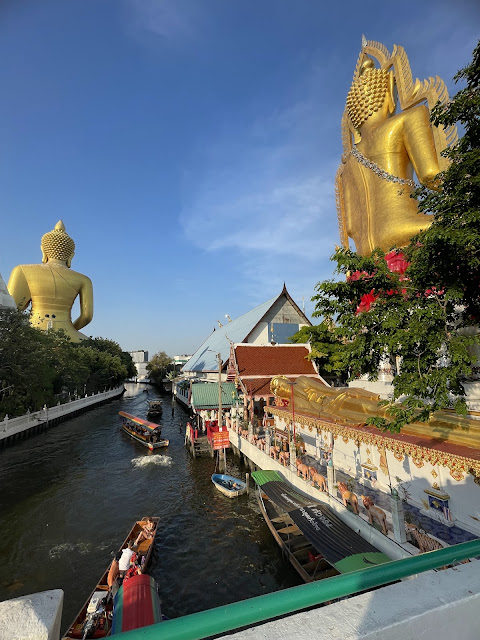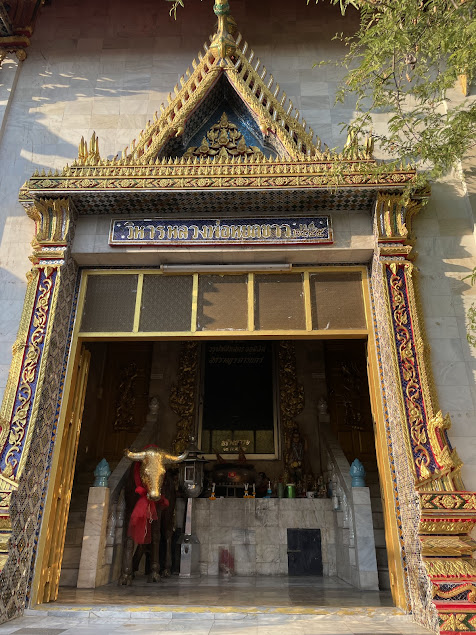Bangkok Chronicles: Walking with the Buddha
The big Buddha in town
So now that the mystery of the bow-tied baskets was solved, it was time to head to the largest Budhha statue in Bangkok. With the serendipity that often accompanies chance encounters, my travel party consisted of two others. Together we had roots in three different continents and a bagful of life experience that made our day out truly memorable.
We wandered through local alleys and crossed a charming little bridge over the canal to enter the temple complex lying a few kilometres west of the Chao Praya river in the Phansi Charoen district. But where was the big Buddha that we could spot so easily from a metro station miles away? Finally, as we turned the corner, towering high over us was the Buddha at Wat Paknam Phansi Charoen.
This temple is located on the site that was established in the Ayutthaya era of Siam, over 400 years ago. Much of it has been refurbished. The big statue is made completely of pure bronze, and said to be the only one of this kind in the world.
Later we made our way through a small village across the canal to a little-known spot. Here the juxtaposition of the vista and the setting sun deceived us into believing we had stepped back into another era.
We ended the day at a nice cafe in the village- the only diners before closing time.
The Golden Mount
In earlier travels to Bangkok, I had visited nearly all noteworthy temples, some of them twice. Yet one still remained on my list. It came up time and again in the reviews. For one reason or the other I had never made it there.
The ability to generate true wonder and awe requires short breaks between a dazzling historic past and the mundane present. Battling urban traffic, speeding bikes and living in concrete buildings is one way to revive the craving for culture. About a month later, one sultry afternoon, it was time to reach into the past again. I hopped onto the local canal boat with another set of intrepid and enthusiastic companions and found myself at the unique Wat Saket.
Our party arrived just before evening. At the entry, a temple worker was patiently affixing metal 'peepal' leaves under this 'wishing tree'. They represent prayers, aspirations and desires of the individuals who requested them.
On the way out this gallery of colourful lanterns was a joy to behold.
I conclude with yet another paradox. Here is a city that oozes spirituality and spirits, tonsured heads and tattoos, restrain and indulgence, often in the same kilometre. The irony is not lost on me.
This is the Kaliyug after all. So far no one is complaining.
********


















Stunning photographs!
ReplyDelete